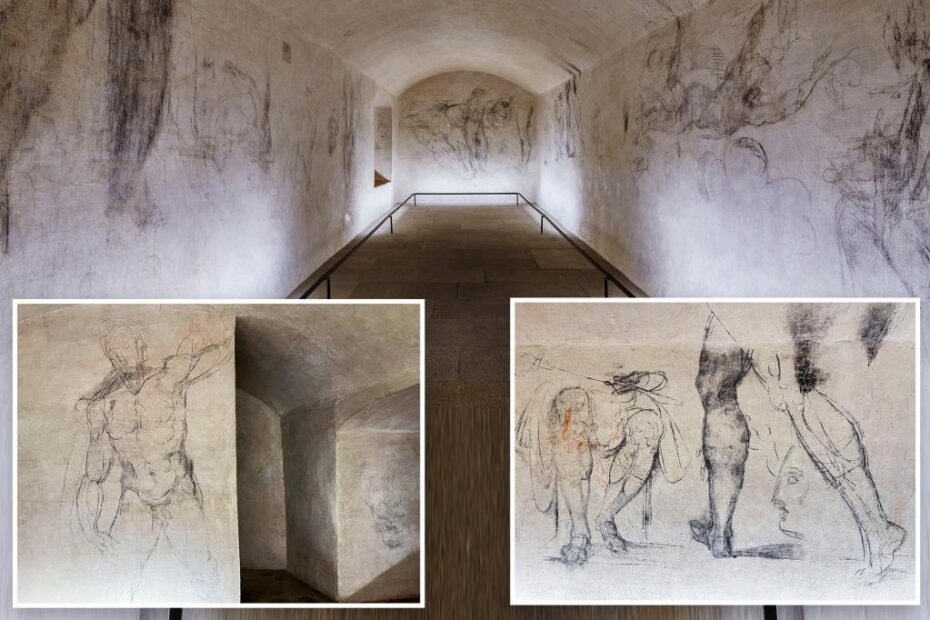[ad_1]
It may not be the Sistine Chapel, but this small sanctuary also may be filled with Michelangelo’s works of art.
Tourists will soon be able to visit a previously hidden room in Florence’s Medici Chapel, where sketches on the walls have been attributed by some experts to the famed artist.
The 33-by-10-foot space will be opened to four visitors at a time for 15-minute viewings — limited to 100 weekly reservations — beginning on Nov. 15.
The formerly secret space was discovered in 1975 when officials were searching for an additional exit to accommodate the influx of visitors.
It is believed the room was used to store coal until 1955 and was then closed and forgotten for nearly two decades — hidden below a trapdoor that was eventually covered by furniture.
The charcoal drawings were eventually revealed from under two layers of paint.
The museum’s director at the time, Paolo Dal Poggetto, “firmly believed that they were by Michelangelo,’’ the current director, Paola D’Agostino, told the Associated Press.
Dal Poggetto believed Michelangelo sat in the small space to hide from “the wrath of Pope Clement VII” for supporting a short-lived republic that overthrew the Medici family around 1527.
“The major scholars of Michelangelo’s drawings dismissed the attributions” upon discovery, D’Agostino explained.
“Others had a more moderate view, in the sense they thought that some could be by Michelangelo and others could be by followers.
“So the debate is ongoing.”
